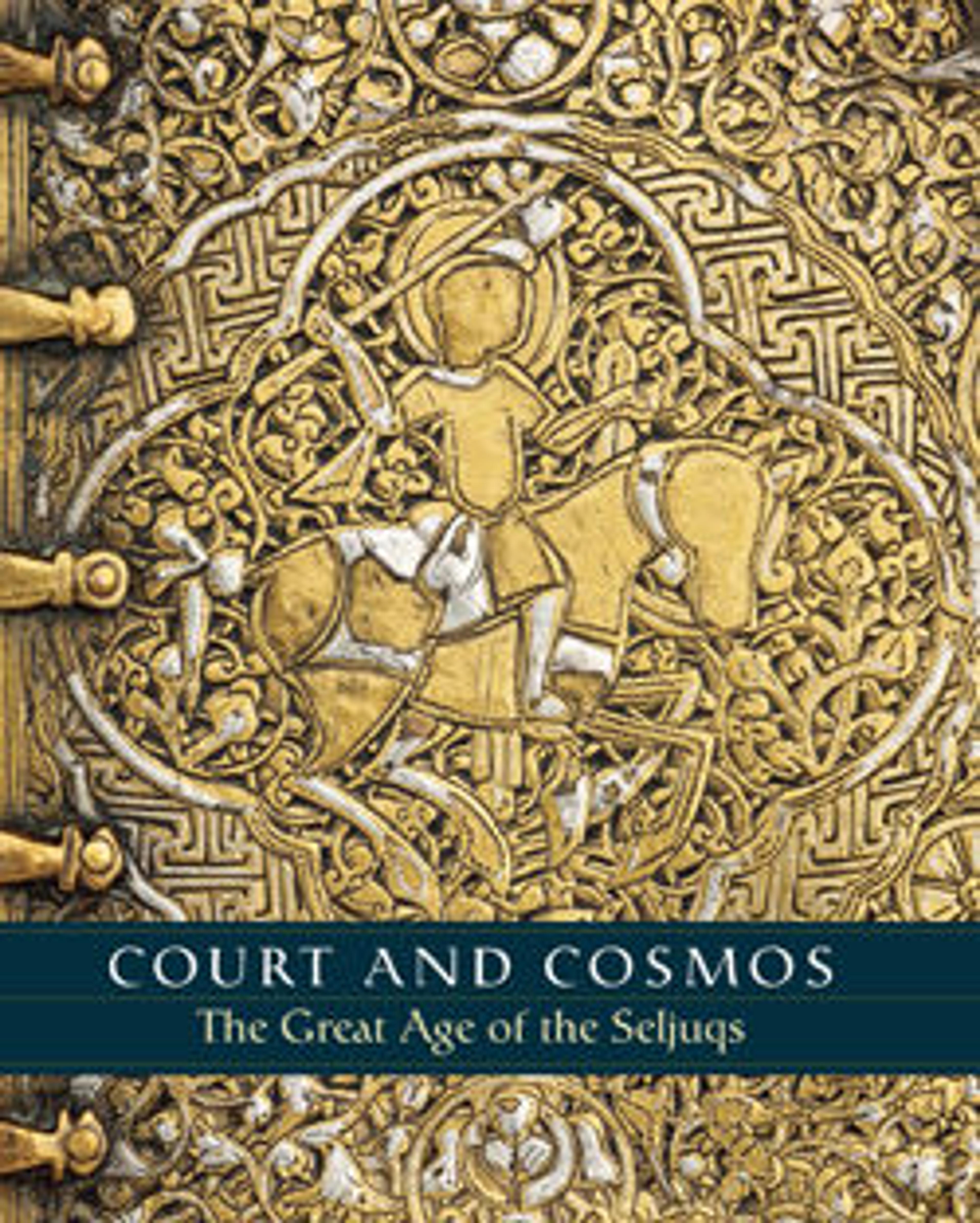Fragment of a Pulpit (Minbar)
Artwork Details
- Title:Fragment of a Pulpit (Minbar)
- Date:dated 546 AH/1151 CE
- Geography:Made in Iran, Yazd
- Medium:Wood (teak); carved and painted
- Dimensions:H. 47 1/2 in. (120.7 cm)
W. 12 3/8 in. (31.4 cm)
D. 3 1/4 in. (8.3 cm)
Wt. 20 lbs. (9.1 kg) - Classification:Wood
- Credit Line:Fletcher Fund, 1934
- Object Number:34.150.1
- Curatorial Department: Islamic Art
Audio
6689. Fragment of a Pulpit, Part 1
NARRATAOR: These items in teakwood are sections of a minbar – or mosque pulpit. Despite its age, the surface carvings are incredibly sharp.
STEFAN HEIDEMANN: During the 11th and 12th century a lot of mosques and schools of higher learning – madrasahs - were built all over the Islamic world. … The mosques and schools of higher learning were mostly not founded by the rulers, but by a lot of wealthy and influential individuals. So this piece of furniture was endowed by someone who is mentioned in the inscription, [Abubakur bin Muhammad bin Atmat Kanai Athamana]. …And he gives in the inscription also the exact date when he did the endowment. It is on Jumara the first in the year 546 in the Islamic calendar, which means, August September 1151.
NARRATOR: Curator Stefan Heidemann is joined by Objects Conservator Daniel Hausdorf:
STEFAN HEIDEMANN: What's at the bottom? It looks a little bit damaged?
DANIEL HAUSDORF: Yes. The damage clearly shows us that this piece was sitting on the floor and therefore much more exposed to water and dirt. We used a 3D imaging technology to look at the tool marks. Based on the results, we can clearly say that the carving on both pieces was made from the same hand. When we examined the surface… we founded traces of paint. Small samples of the pigments have been analyzed. Based on the results, we found red and blue pigments.
NARRATOR: To hear about how many of the objects in these galleries relate to the context of the mosque, press PLAY.
Listen to more about this artwork
More Artwork
Research Resources
The Met provides unparalleled resources for research and welcomes an international community of students and scholars. The Met's Open Access API is where creators and researchers can connect to the The Met collection. Open Access data and public domain images are available for unrestricted commercial and noncommercial use without permission or fee.
To request images under copyright and other restrictions, please use this Image Request form.
Feedback
We continue to research and examine historical and cultural context for objects in The Met collection. If you have comments or questions about this object record, please contact us using the form below. The Museum looks forward to receiving your comments.
